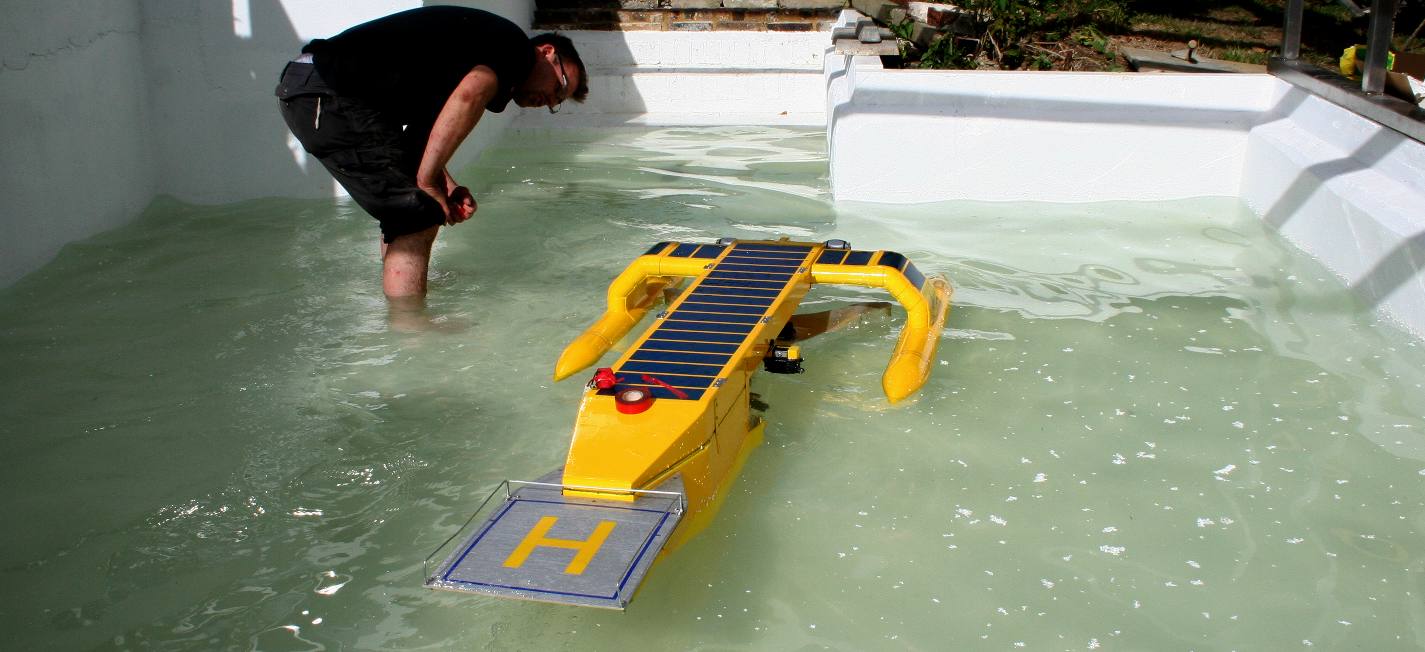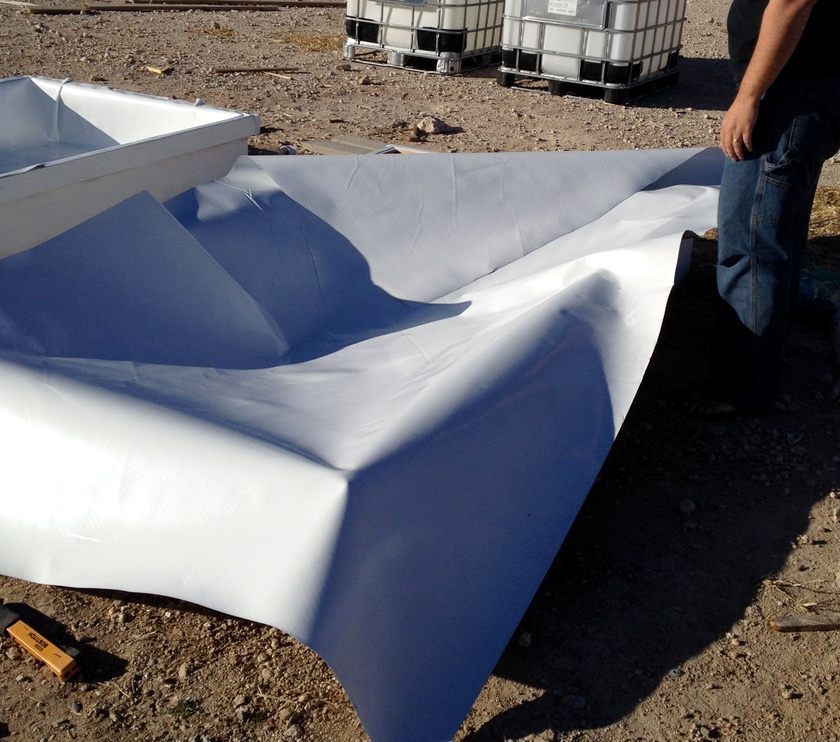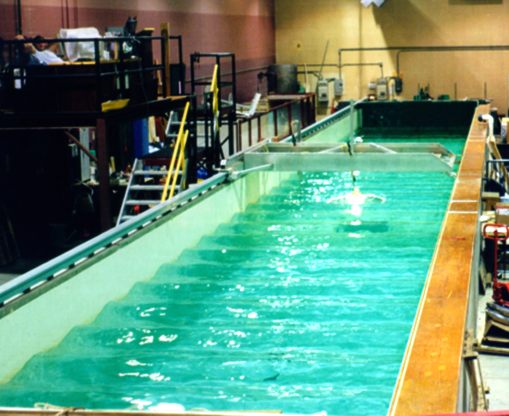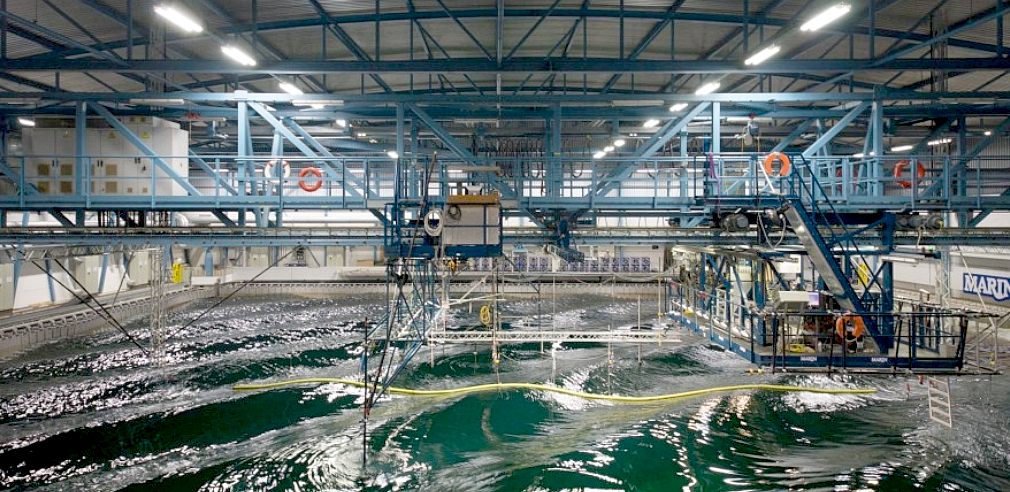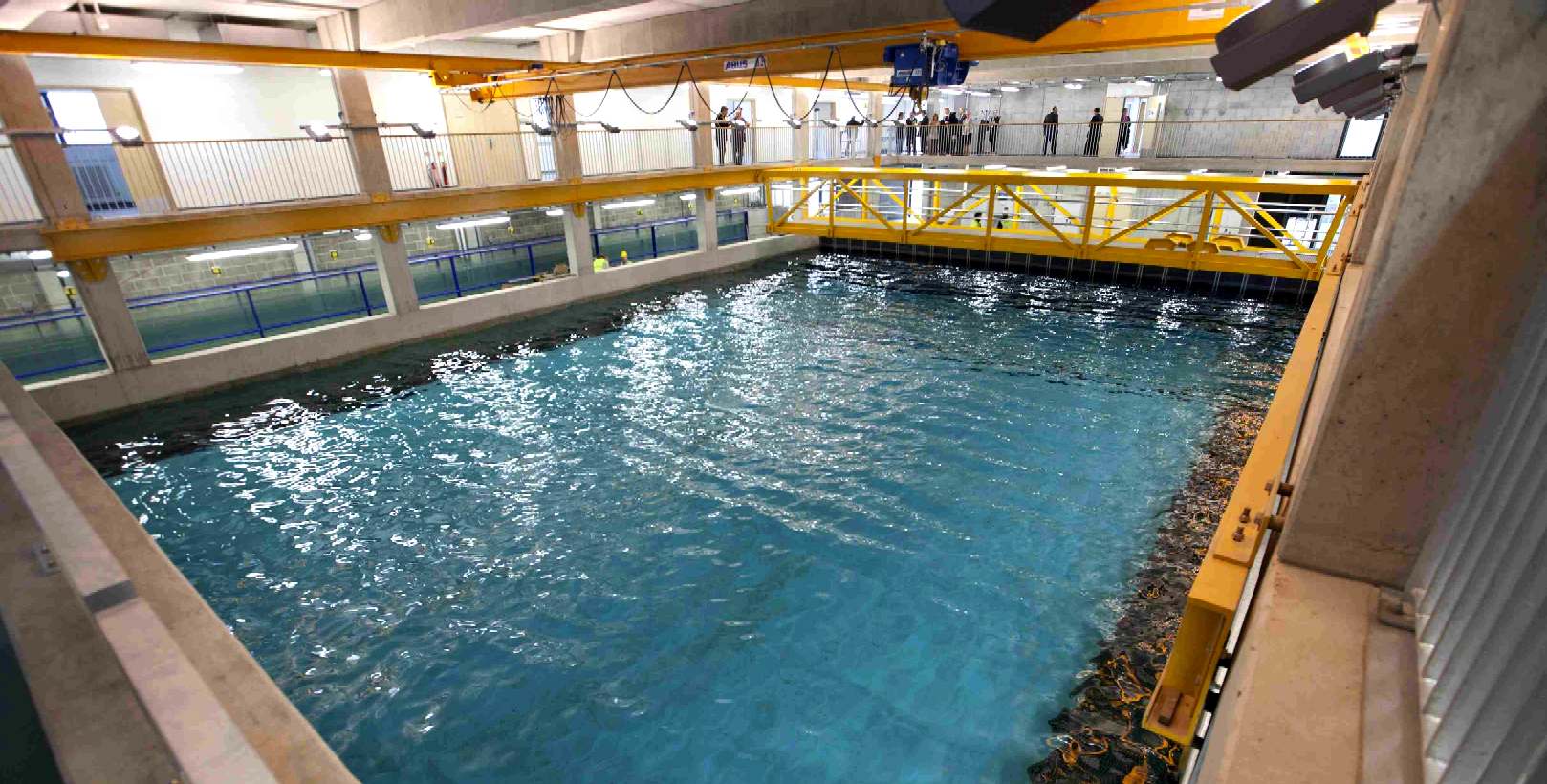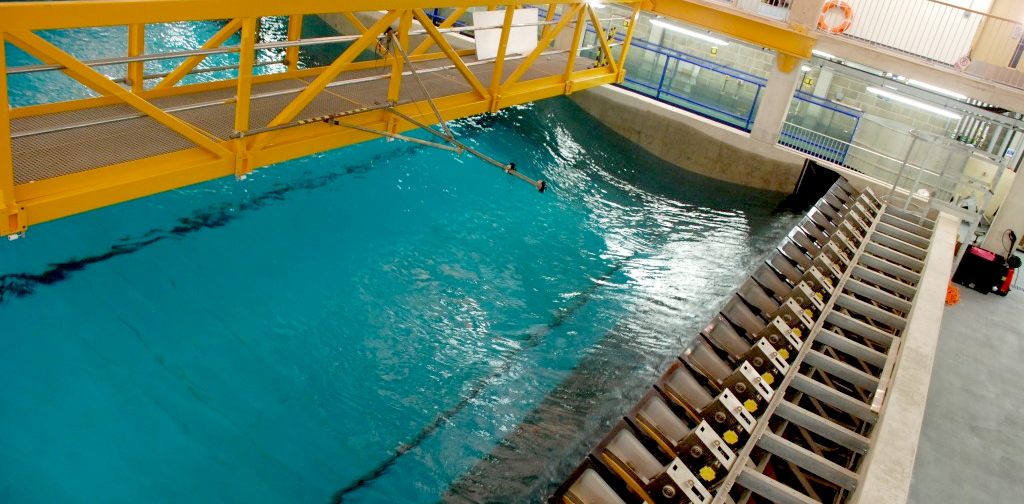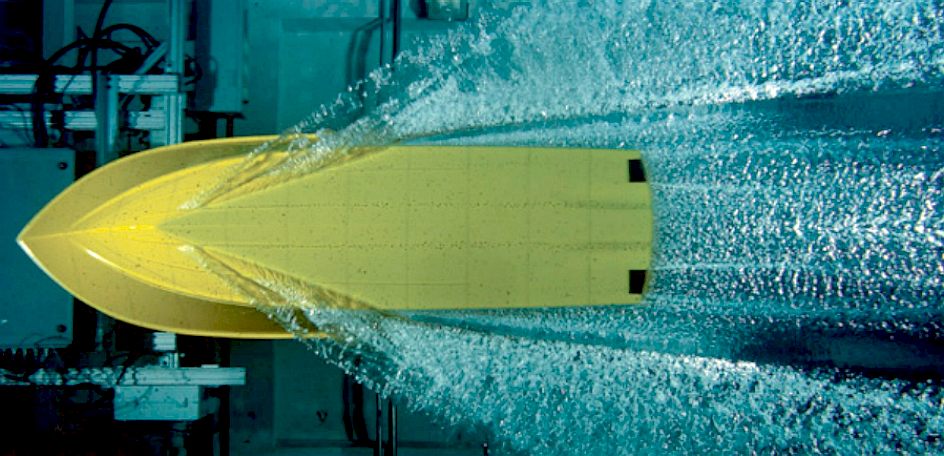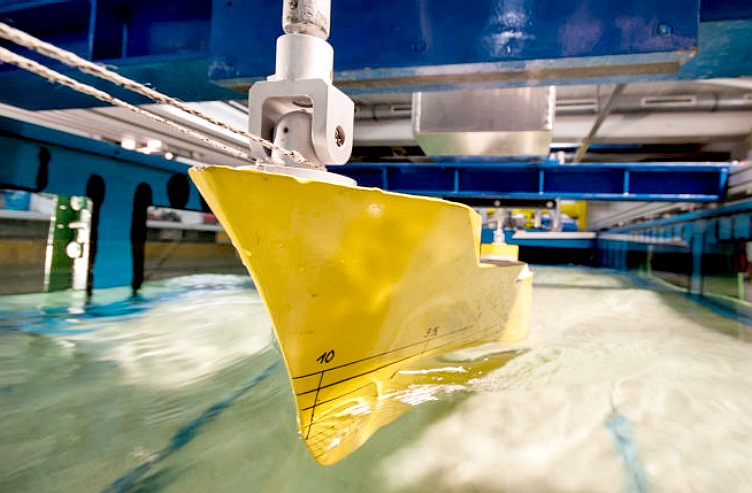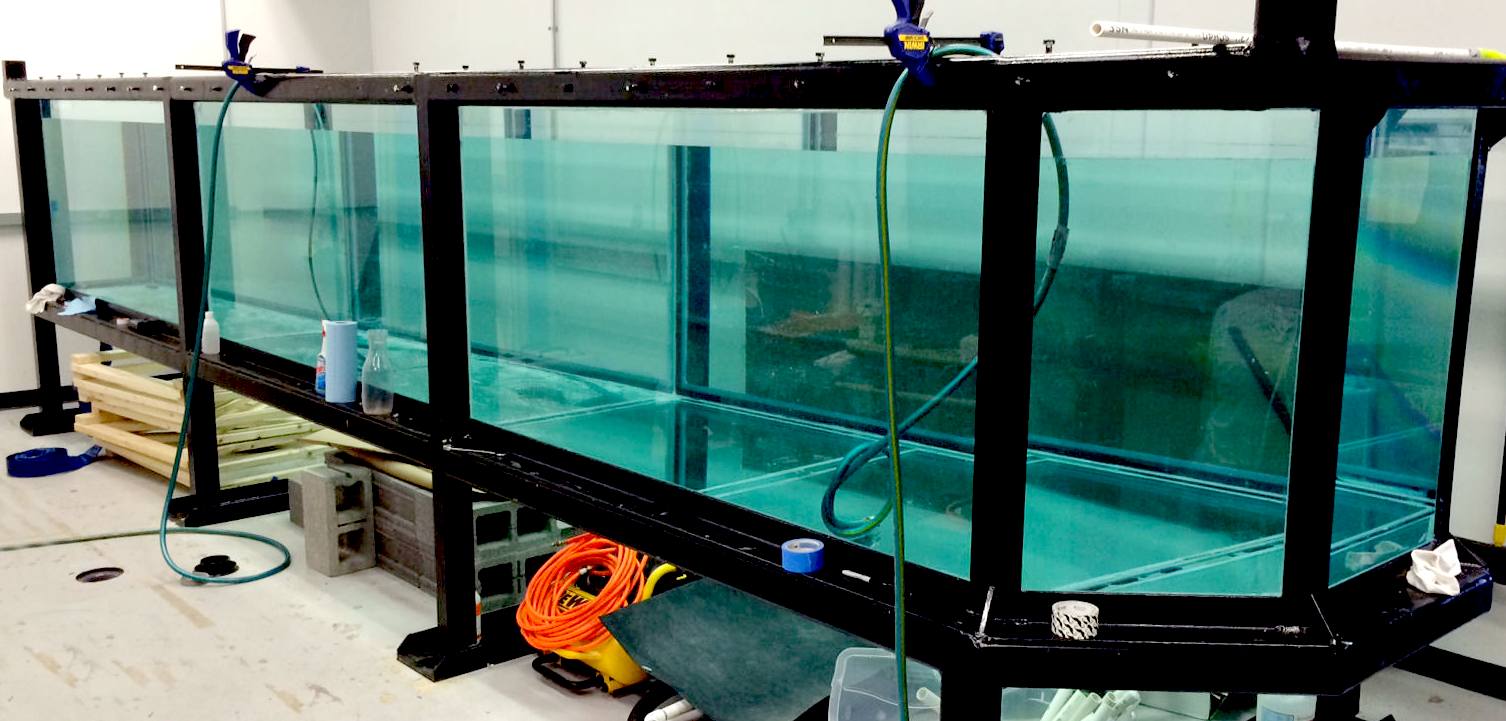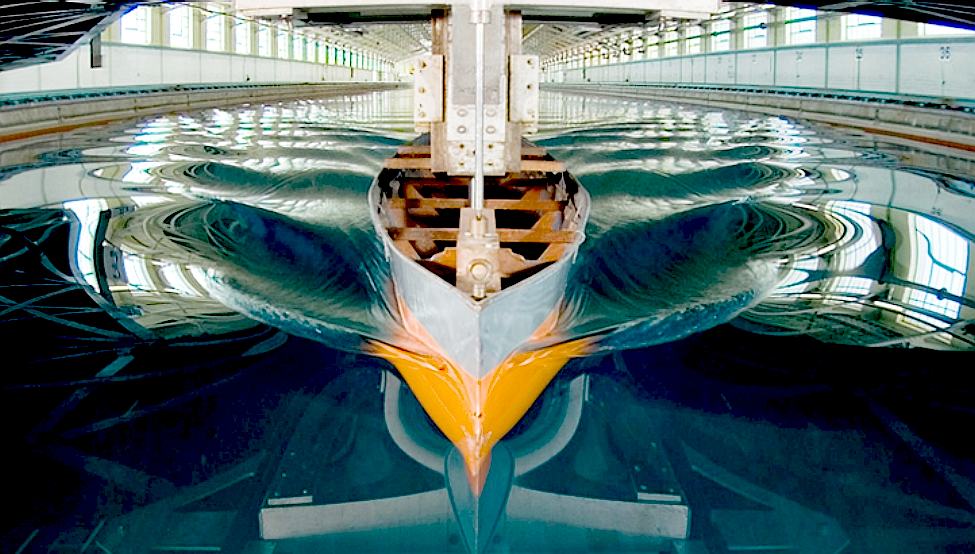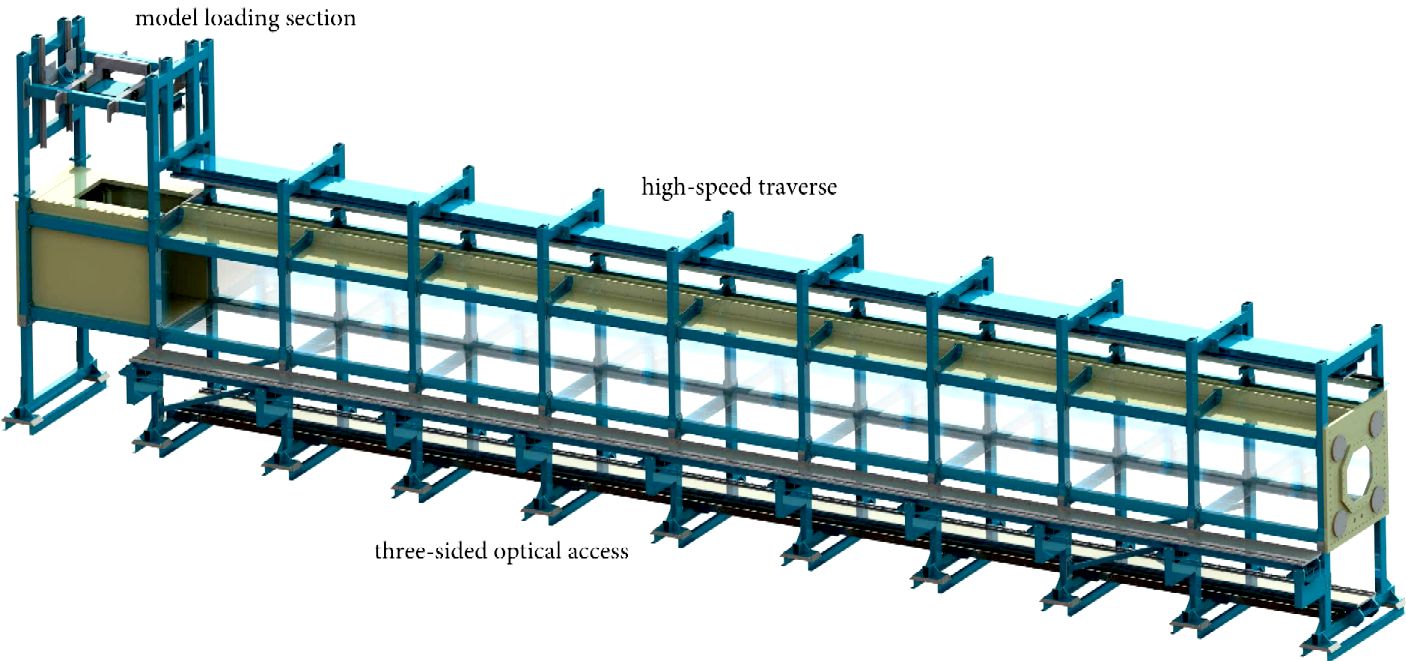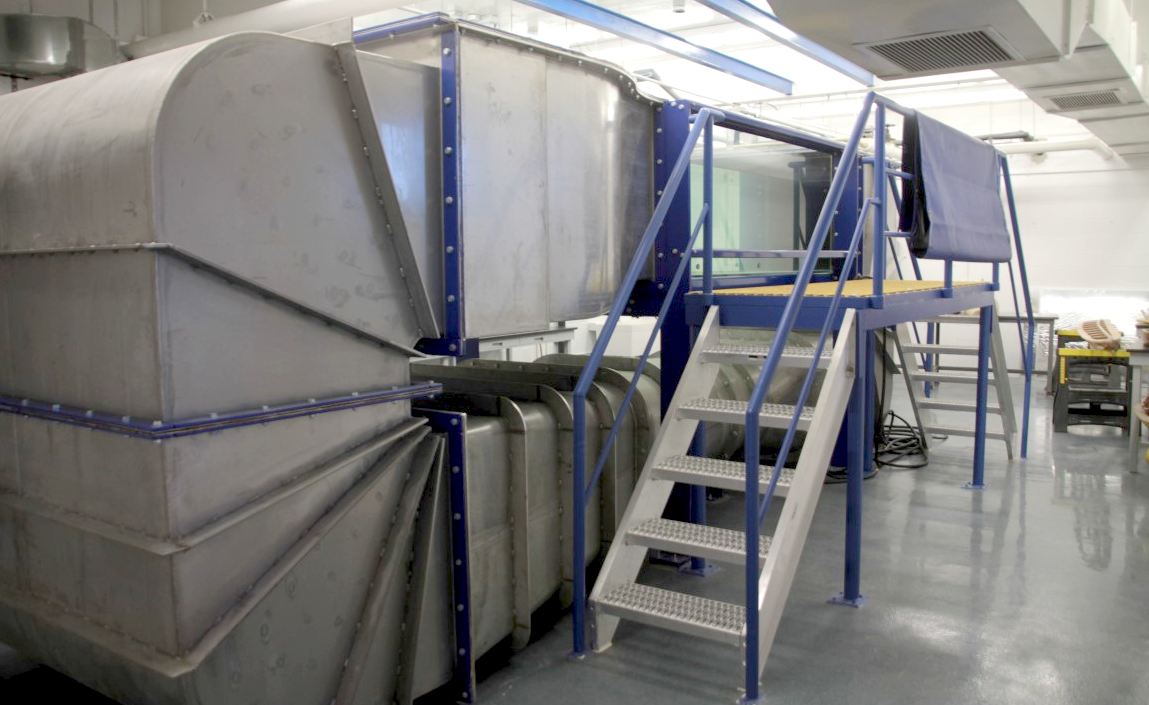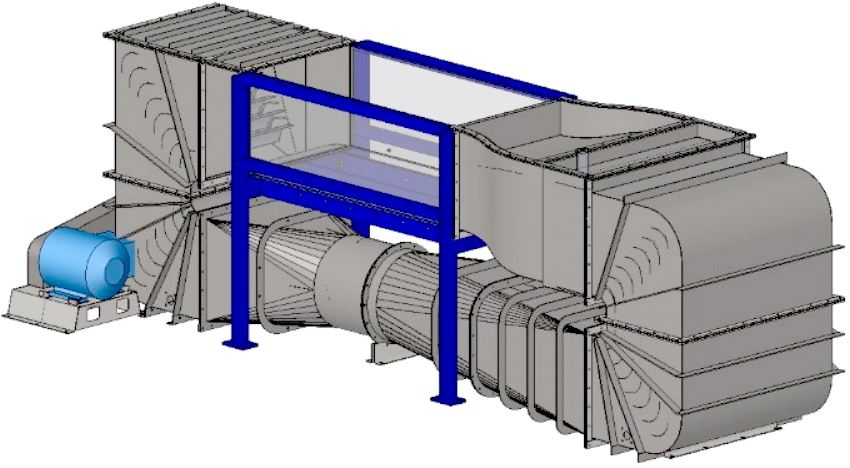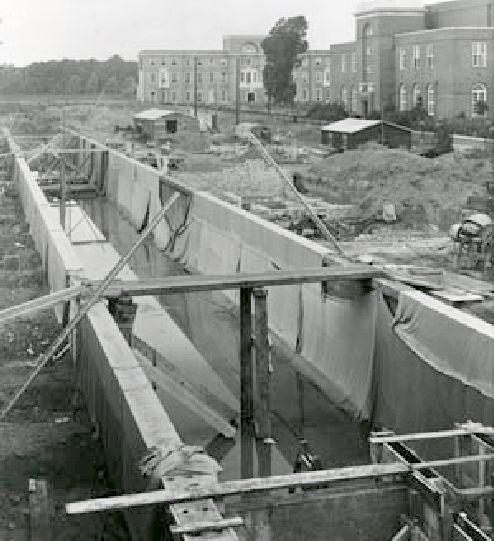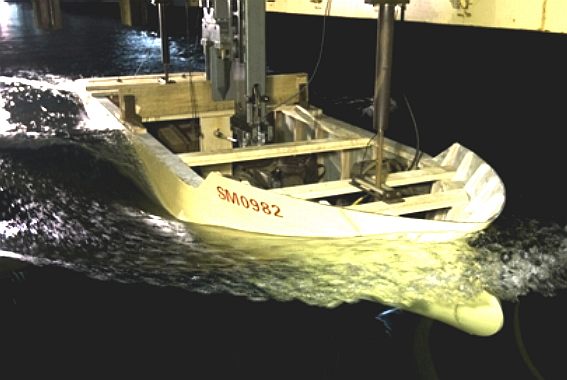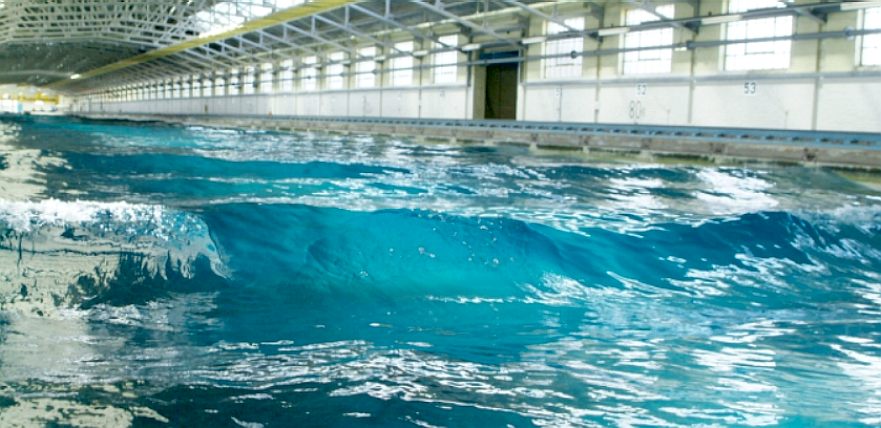|
REVIEWS - TANK TEST FACILITIES GLOBALLY
BRICKS & MORTAR - DRAINAGE - FILTRATION - GLASS & PAINT - GANTRY - HYDRODYNAMICS HISTORY - INSTRUMENTS - LABORATORY - LOGISTICS - OUR TEST TANK - SEAVAX TEST VIDEOS - SLUICE GATE - WAVE MAKING - WIND MACHINE
|
||
|
Water tanks and testing is hardly mainstream conversation, yet this highly specialized subject is also diverse, with each installation being virtually unique. For this reason we take a look at some of the variations, because we can learn something from every one - otherwise, they would all be the same of course.
Most tank testing facilities cost their institutions several million US $dollars or £pounds sterling. We simply do not have that kind of money for design confirmation tests. We pride ourselves on getting a job done as economically and simply as possible. Where the US Navy MASK test tank is probably the largest water basin in the world, it is possible that we are the smallest and most economical tank test facility in the world. We estimate conversion and equipment costs to be around $47,400 (including some shared equipment with the robotics lab).
FRIDAY 29th JULY 2016 - In one of the smallest water tanks in the world, Chris Close, watches plastic being sucked into the SeaVax development model. It was a hot day but still the water was cold. That is why we are heating it for our testing programme. Copyright © July 29 2016, all rights reserved. You will need permission from Bluebird Marine Systems Ltd to reproduce these photographs.
WATERPROOF LINER - These flexible sheets are available at most garden centers in a wide range of sizes and qualities. With a bit of clever design and landscaping, an unattractive feature can be brought back to life and made into something useful.
RENDERED WATER BASIN - If you have a smooth rendered facing to your tank, you may be tempted not to use an underlay, but it is recommended.
WOW! A 270 METER TOW TANK - [LEFT] This is one of the longest tow tanks in the world. We can just begin to wonder at the cost of building such a superb installation. [RIGHT] The Jere A Chase Ocean Engineering Laboratory at the University of New Hampshire. This tank features a wave making machine. These are both examples of research facilities that only academic institutions and big business can afford, costing £millions of pounds to build.
NEAT - The test tank at University College London has glass sides for observation.
MAKING WAVES - Boyan Slat's Ocean Cleanup team began testing the barrier in different water conditions at the Maritime Research Institute Netherlands (MARIN) in October 2015. They were able to simulate extreme wave conditions to see what the ocean array could withstand. The engineering team are hoping to learn some more valuable lessons from the open water test in the North Sea this year. The first fully operational test Coastal Pilot is set to be deployed off the coast of Tsushima Island in Japan in late 2016; it will be anchored to the ocean bed. MARIN, is one of the leading institutes in the world for hydrodynamic research and maritime technology. The services incorporate a unique combination of simulation, model testing, full-scale measurements and training programmes. MARIN provides services to the shipbuilding and offshore industry and governments. Customers include commercial ship builders, fleet owners, naval architects, classification societies, oil and LNG companies and navies all over the world. MARIN, 2, Haagsteeg, 6708 PM, Wageningen, The Netherlands. Phone +31 317 49 39 11, Fax +31 317 49 32 45, E-mail info@marin.nl
ROUGH WEATHER - Over 100mph winds and 30 foot waves crashing over Brighton Marina on the Sussex coast, English Channel. We need to be able to simulate storm conditions in our test tank to be sure that SeaVax can cope as the wind speeds rise. How we are going to achieve this is not yet cast in stone, but we do have a micro-light propeller and some hefty electric motors - so we should be able to whisk up a storm - with a electronic controller to give us variable wind speeds and suitable swivel mountings in a steel frame, to give us directional control. We can then measure the forces on the hull with wings open and folded, using a variety of instruments, to include strain gauges. We can also flood the hulls as per the full size vessel to simulate sea anchors. The other very important feature to explore, is how the wind turbines will cope deployed and fully furled. Brighton Marina is built to handle such gales with ease. Have you noticed that with climate change, storms are a lot more frequent?
STORM KATIE - Over the Easter Bank Holiday period, March 2016, the south of England suffered storm conditions. This coincided with us clearing the site and picking up materials. Even the our tough little Micra would not have survived this tree. See below.
WATERPROOFING - POND LINING
A pond liner is an impermeable
geo-membrane used for water retention, including the lining of lakes and garden ponds.
Pond liners need to be protected from sharp objects (for example, stones) below the liner and from being punctured by any objects in the water body.
A softer underlay can be used as a precaution, even with a relatively smooth
deck. Pond liners are manufactured in rolls. Strips of liner can be seamed or welded together on
site.
PLYMOUTH UNIVERSITY
The Plymouth University Marine Building project is one of the largest most complex wave and current test facilities that Edinburgh Designs has produced. It was designed for both academic and commercial research and is capable of simulating a wide variety of wave and tidal situations. The facility includes four separate tanks: a deep water ocean tank; a shallow water coastal tank, a sediment flume and a tilting flume. All four tanks are equipped with wavemakers and current generators. The ocean tank has a hydraulic moving floor for ease of access and to simulate different ocean conditions.
The new £19m Marine Building at Plymouth University is a world-leading hydrodynamics laboratory that provides flexible, state-of-the-art research, testing, work and education facilities for marine study as well as a business innovation centre for marine renewable technology.
The floor itself is a stainless steel frame with a platform comprising
GRP panels that sits within the in-situ ocean tank. Though primarily solid, the floor is strategically perforated to allow water to flow through it when it is being raised. The floor is lifted by six
hydraulic rams fixed to its underside that lift the platform into its required position. These rams have been procured from
North Sea oil rig fabricators and use the same technology that would be used in the underwater oil extraction process. Brushed steel components along the perimeter of the floor glide against runners fixed to the tank wall surfaces and assist the floor lifting operation.
STUDY - This picture is a great example of why tank testing is so important. You could not see this pattern, let alone study it in detail without the facilities to capture the shot. Such runs can be carried out at different speeds to find the best operating speed for a hull. Alternatively, a hull can be modified to improve performance.
KEMPF & REMMERS - UNIVERSITY OF DUISBURG-ESSEN, CIRCULATION TANK 1961
In shipbuilding, model tests are still common to assess new and converted ships and to optimise the hull geometry. Unlike in the automotive sector, the design of prototypes in shipbuilding is not economical due to the size of the vessels.
UNDER TOW - This model hull glides through the water under tow at the Institute of Ship Technology.
LANCASTER UNIVERSITY - Another approach is to construct a tank in steel sections and bolt it together. We like the glass viewing ports in this unit.
MARYLAND
UNIVERSITY
- The Jones Laboratory is an experimental aerodynamics laboratory in the Department of Aerospace Engineering at the University of Maryland.
Their research focuses on unsteady, separated, and three-dimensional flows on flapping wings,
TOWING
TANK - A new 1.5m x 1.2m x 7m towing tank with a 4-axis motion control system (pitch,
plunge, translation, and rotation) has been designed and constructed under a
DURIP sponsored by AFOSR. The tank is also equipped with a set of 33 gust generators to produce an unsteady flow field for experiments on gust
encounters. Multiple ATI submergible Force/Torque sensors are used for 6
degree-of-freedom, comprising of Nano25s and Mini40s.
ALBERTA UNIVERSITY - Coanda was contracted by the University of Alberta to design and build a Stratified Towing Tank. This piece of experimental equipment is designed to provide the capability of studying the characteristics and effects of towing models through fluids that contain stratified layers of different densities. One of the features of this design is a system that provides the flexibility to fill the tow tank with distinct layers of different density fluids or a density gradient. Some other features include a movable interior partition that allows the channel length to be shortened and a computer controlled towing mechanism. Tow Tank Specifications: Length: 8m, Width: 0.8m, Depth 1m. Towing Capability 25kg at 0.5m/s
ROYAL NAVY - Qinetiq's tow tank is used to develop naval marine systems, here seen testing the hydrodynamics of a fairly conventional hull - in the process making this stunning picture. MOD funding budgets are copious and continuous, allowing their subcontractors to operate such expansive facilities almost free of commercial risk.
OTTER - The new Optical Towing Tank for Energetics Research (OTTER). With a cross-section of 1m x 1m and an overall length of 15m, the high-speed traverse system is able to hit Reynolds numbers on the order of a million. The ceiling is sealed to prevent free-surface effects (sloshing) but free-surface testing can be accommodated by lowering the waterline slightly. Optical measurement techniques such as time-resolved PIV and 4D-PTV are employed for direct flow measurements. An ATI Nano submersible six-component balance is used for direct force and moment measurements.
The Institute of Ship Technology and Ocean Engineering maintains a test facility of its own, enabling the students to gain an insight into model testing and the assessment of ship and
propeller geometry.
University of Duisburg-Essen
MASK US NAVY UPGRADE - In 2007 Edinburgh Designs were awarded the contract to upgrade the Maneuvering And Sea Keeping (MASK) basin, the worlds largest wave test facility, for the US Navy. The original pneumatic wavemakers from the 1950s were replaced with 216 flap wavemakers which will provide more accurate wave generation and greatly reduce the amount of calibration users must perform to create the desired wave conditions. The installation was completed in December 2013. In the first six months of operation the machine clocked up over 600 hours of wave generation time. Imagine the energy bill for that!
NEWCASTLE UNIVERSITY - COMBINED WIND, WAVE & CURRENT TANK (WWC)
This combined Wind/Wave
and Current Tank is one of only a handful of such facilities in the world, and was designed for use with any, or all, of the components with equal emphasis.
WWC
SPECIFICATIONS
EDINBURGH DESIGNS - TIDAL WIND & FLOW TANKS
WATER CIRCULATING TANKS - Flow tanks are used to test static models in moving water typical applications include ships, marine structures and turbines. The flow propulsion system and return pipe work is specifically designed to match the flow conditions in the working zone. Sizes constructed so far range from 0.6 x 0.6 x 8m to 0.8 x 0.8 x 2m with a flow speed of 2m/s although other sizes are also possible.
Edinburgh Designs Ltd
PHYSICS
- The National Physical Laboratory (NPL) opened its first ship tank on 5 July 1911. It was 150 m by 9 m wide and held 5000 tonnes of water with a centre depth of 3.75 m. A marine engineer and shipbuilder, Alfred Yarrow, provided £20,000 for the tank's construction to enable the testing of ship models.
TANK TESTING - This is an example of a tow tank, where the model of a ship hull is being tested for hydrodynamic drag and wave keeping performance. Most testing in tanks is to help designers to make hulls that are more efficient to reduce fuel bills. Our main aim is to ensure that a robot boat can couple with a converted bulk carrier. But before that, we need to be sure that our giant vacuum head can suck up plastic particles and filter them out to eject clean water back into the sea. It has worked in test rigs, but we need to be sure that it works well as an assembly.
UK NAVY - Qinetiq's test tank at Haslar is used to develop nuclear submarines and other naval warships. How can any country justify such expenditure when the oceans are so dirty? Keeping you house in order is sustainable good practice, going to war is a negative for the human race.
LINKS & REFERENCE
https://avaaz.org/ https://www.uni-due.de/IST/ismt_circulation_tank.shtml http://www.edesign.co.uk/portfolio/plymouth/ https://www.plymouth.ac.uk/research/institutes/marine-institute/coast-laboratory https://www.rivallab.com/facilities/ http://www.npl.co.uk/about/history/research/ship-tanks/ http://www.umd.edu/ http://www.building.co.uk/making-waves-plymouth-marine-laboratory/5069697.article info@marin.nl http://www.marin.nl/ https://en.wikipedia.org/wiki/Maritime_Research_Institute_Netherlands https://www.coanda.ca/services/equipment/tow-tank/ http://www.designindaba.com/articles/creative-work/award-winning-ocean-cleanup-team-launch-their-first-open-water-test http://www.bbc.co.uk/news/uk-england-35909651 http://stamco.co.uk/
BRICKS & MORTAR - DRAINAGE - FILTRATION - GLASS & PAINT - GANTRY - HYDRODYNAMICS HISTORY - INSTRUMENTS - LABORATORY - LOGISTICS - OUR TEST TANK - SEAVAX TEST VIDEOS - SLUICE GATE - WAVE MAKING - WIND MACHINE
|
||
|
This page is Copyright © 2017 Bluebird Marine Systems Ltd. The names Bluebird™, Bluefish™, Miss Ocean™, RiverVax™, SeaNet, SeaVax™, and the blue bird & fish in flight logos are trademarks. All other trademarks are hereby acknowledged.
|
